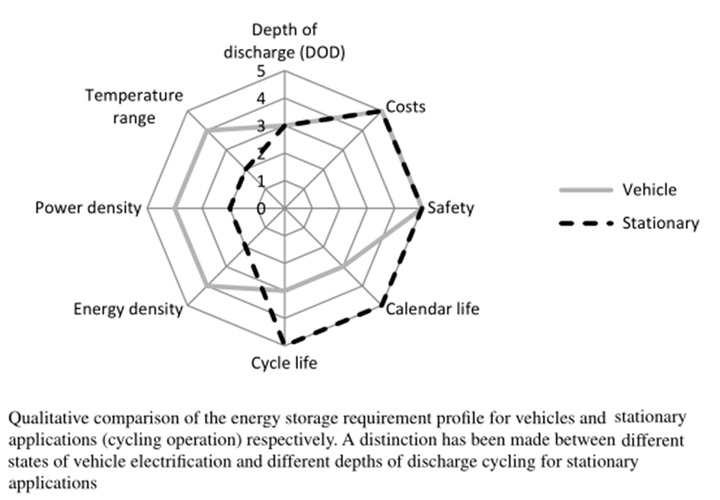The demand for fixed energy storage systems varies with different time dimensions: first, the short-term fluctuations of the power grid need to be compensated; second, buffering and storing energy also require several hours. Therefore, it is necessary to choose the appropriate storage capacity, with long service life and high cycle stability. The grid-connected and off-grid implementation methods of photovoltaic energy storage systems and industrial energy storage systems of 1MW or more will be the key technologies for future applications.
Requirements for industrial energy storage systems
When selecting an energy storage system, the most important factors are service life, reliability, power, availability, safety, and cost. The requirements of energy storage systems play a very important role in the development of renewable energy and the availability of grid capacity. There is no doubt that lithium-ion batteries have great potential in electrochemical energy storage systems. The determining factor for these energy storage systems is the load demand in different time periods. First, they need to balance short-term power fluctuations; second, they need to buffer and store wind or solar energy for several hours. These new requirements must be met with customized lithium-ion batteries, which currently do not exist.
At this stage, lithium battery systems stand out for their high energy and power density. These advantages can be further improved by using different active materials. The current development focuses on improving safety and reducing costs (lifecycle costs). Many potential combinations of suitable materials have not been fully utilized. New materials, nano-composite materials, and new cell concepts provide great potential for further improvement and new application requirements. The demand characteristics of fixed energy storage systems include high throughput energy, long service life, and high cycle stability.
Lithium-ion batteries for fixed energy storage systems

Figure 1. Comparison between fixed storage and electric vehicles
Many automotive manufacturers have recently developed high-capacity batteries. The capacity of existing batteries ranges from 10 to 400 Ah. These batteries are specifically customized based on the increasing demand of electric mobile battery systems. For example, batteries with high specific power, i.e., high power batteries, have been developed for hybrid electric vehicles (HEVs), while batteries with high energy density, i.e., high-energy batteries, have been designed for pure electric vehicles (BEVs).
As mentioned above, the main goal of electric vehicles is to improve energy density and power density. Figure 1 highlights the difference between the two different requirements. The comparison of the two different requirements of electric vehicles and fixedenergy storage systems is shown using weighted averages. Compared with electric vehicles, the demand of fixed
energy storage systems needs to meet the requirements for both low depth of discharge in short cycles suitable for stabilizing the power grid and high depth of discharge lasting several hours for storing solar energy. In addition, they also require a battery life of not less than10 (20) years.
